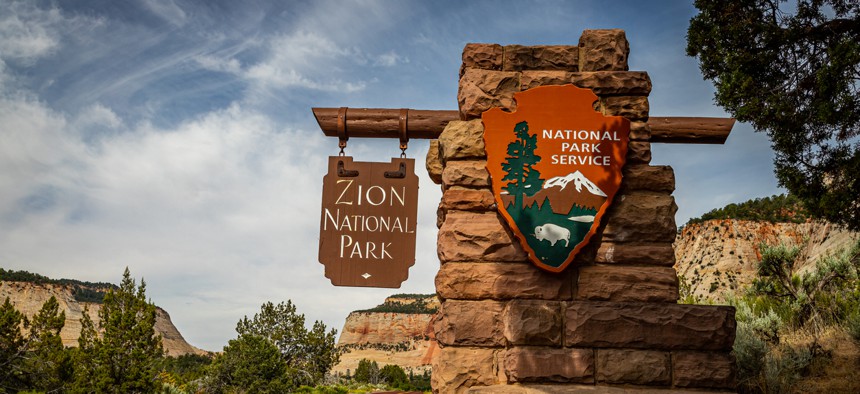Federal Agencies Achieve Highest Customer Experience Scores Yet

The official National Park Service sign that marks the east entrance to Zion National Park in Utah. NPS was the highest scoring federal agency in customer experience. Different_Brian/istockphoto
Customer experience scores varied significantly across demographic groups.
Federal agencies improved their collective customer experience scores for a second straight year, improving 1.5 points over 2020, according to Forrester’s annual U.S. Federal Customer Experience Index.
The improvement comes on the heels of the executive order President Joe Biden issued Dec. 13, which outlines several near- and long-term customer experience directives to take to help rebuild trust in the federal government.
Rick Parrish, vice president and principal analyst at Forrester, said the latest federal customer experience is a “good news, bad news story.” On one hand, scores improved in six of 15 key agencies Forrester measured, including a major improvement at the Transportation Security Administration. On the other, the federal average score of 62.6 out of a possible 100 still lags 10.7 points behind the private sector average.
“On average, the news is good, agencies are up 1.5 points and the highest we’ve ever seen, but of course a 62.6 on a 100-point scale leaves a lot of opportunity for improvement,” Parrish told Nextgov.
Nine agencies or programs scored higher than the industry average of 62.6: the National Park Service (74.7), Bureau of Consular Affairs (70.6), Medicare, (67.6), Tricare (66.9), Medicaid (66.1), Veterans Affairs Department (64.3), U.S. Postal Service (64.3), TSA (64.2) and U.S. Citizenship and Immigration Services (63.8).
The five lowest scoring agencies or programs were USAJOBS.gov (50.3), the IRS (54.1), HealthCare.gov (54.5), Education Department (56.7) and Small Business Administration (58.6).
Perhaps the most glaring statistics in this year’s CX index, Parrish said, involved the equity of federal customer experience. Customer experience measurements spanning government agencies varied significantly across demographic groups. (In a blog post, Parrish provides a nuanced breakdown of other demographic data in the report).
For example, white customers have the best customer experiences, with an average score of 64, 16.1 points higher than Pacific Islanders, whose average score is 47.9.
Men (64.4) also fared better than women (61.1) in customer experience score, which the report described as a “statistically significant” difference. In addition, older customers tend to have better experiences than younger customers. The average federal CX score for members of the silent generation—those born before 1945—scored 71.8, while members of Generation Z, or those born after 1997, only scored 54.
“That’s a CX quality difference of 17.8 points—the widest among the five demographic categories we studied,” the report said of the generational age gap in customer experience scores.
The report also found that wealthy customers have higher average customer experience scores than lower income customers. For example, the average CX index score for those with incomes of $100,000 or higher was 69.0, or almost 10 points higher than customers with incomes under $25,000, which scored a 59.2.
NEXT STORY: Special Report: Computing on the Edge






